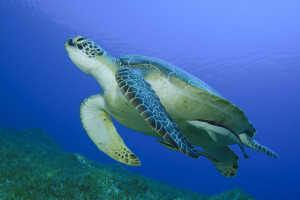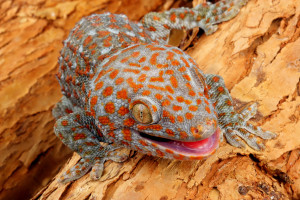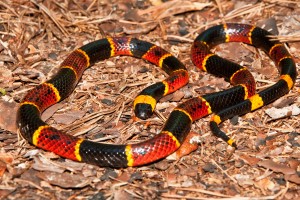 When you think of Florida, what comes to mind? Sunshine? Beaches? Oranges? You wouldn’t be wrong. However, there’s something else that’s known to be a symbol of this state: the sea turtle. Sea turtles can be found in the Everglades, Florida Bay and the Gulf of Mexico. Five species of the sea turtle are found in the southern Florida waters: loggerhead (Caretta caretta), green turtle (Chelonia mydas), leatherback (Dermochelys coriacea), Kemp’s ridley (Lepidochelys kempi), and hawksbill (Eretmochelys imbricata). Unfortunately in present day, all five of these species are either threatened or endangered.
When you think of Florida, what comes to mind? Sunshine? Beaches? Oranges? You wouldn’t be wrong. However, there’s something else that’s known to be a symbol of this state: the sea turtle. Sea turtles can be found in the Everglades, Florida Bay and the Gulf of Mexico. Five species of the sea turtle are found in the southern Florida waters: loggerhead (Caretta caretta), green turtle (Chelonia mydas), leatherback (Dermochelys coriacea), Kemp’s ridley (Lepidochelys kempi), and hawksbill (Eretmochelys imbricata). Unfortunately in present day, all five of these species are either threatened or endangered.
Because of the Endangered Species Act of 1973, it is illegal to take, harm, hunt, pursue, shoot, wound, kill, capture, trap, or collect any endangered fish of wildlife species. Sea turtles and their nests can be spotted along many beaches in Florida and it is illegal to disturb the nests.
In the Everglades, Cape Sable has one of the most active turtle nesting areas in the south Florida region. Park biologists monitor these nests and their activity to document the turtles’ presence. People can easily spot turtles’ tracks, which are known as a crawl. If the female sea turtle abandons her attempt at nesting (for whatever reason), the tracks are called a false crawl. A person can tell the direction of travel from the orientation of the comma-shaped flipper marks and superposition of turtle tracks. Each species of turtle leaves behind a specific set of tracks.
A biologist can find a sea turtle nest by looking for certain-shaped mounts of sand on the beach. These biologists mark and record the nests and check for signs of hatching 45 days later. Incubation takes about 60 days. The temperature of the sand determines how fast the baby sea turtles develop and hatch.
Biologists find sea turtle nests by looking for a characteristically shaped mound of sand on the beach. They mark and record each nest and begin checking for signs of hatchlings about 45 days later. Although incubation takes about 60 days, the temperature of the sand determines the speed of embryo development, so the hatching period can cover a broad period of time. The speed of embryo development increases with increasing nest temperature. Cooler nests generally produce more males, and warmer nests generally produce more females. Hatching usually occurs at night.
Unfortunately, predators sometimes get to the eggs before they hatch. The eggs are the size of a ping pong ball. The baby turtles leave the nest and make their way to the ocean. Biologists will keep watch of the nest to see how many eggs hatches and how many survived.
On an airboat tour, you’ll have you chance to see so much wildlife! Captain Mitch’s Airboat Tours give you a glimpse of the Everglades like no other. Captain Mitch has been navigating the Everglades for decades! To book an airboat ride, click here or call 800-368-0065.
 The Everglades has more than 50 distinct kinds of reptiles in the Park – they happen to be the Park’s most well-known and fascinating inhabitants. Unfortunately, some of these reptiles are invited guests who decided to make the Everglades their home. Many reptilian species are invasive. For this article, we wanted to spotlight one such invasive reptile: the Tokay Gecko.
The Everglades has more than 50 distinct kinds of reptiles in the Park – they happen to be the Park’s most well-known and fascinating inhabitants. Unfortunately, some of these reptiles are invited guests who decided to make the Everglades their home. Many reptilian species are invasive. For this article, we wanted to spotlight one such invasive reptile: the Tokay Gecko. The Burmese python is well-known to be an invasive species in the Florida Everglades; however, there seems to be another major invasive reptile in the wetland: The Nile crocodile. Yes, the Everglades are full of crocodiles, but they’re native to America. These Nile crocodiles come from Africa. But, how did these crocs make their way across the Atlantic Ocean? And, how they end up swimming around the Everglades? That is the big question.
The Burmese python is well-known to be an invasive species in the Florida Everglades; however, there seems to be another major invasive reptile in the wetland: The Nile crocodile. Yes, the Everglades are full of crocodiles, but they’re native to America. These Nile crocodiles come from Africa. But, how did these crocs make their way across the Atlantic Ocean? And, how they end up swimming around the Everglades? That is the big question. Twenty three snake species live in the Everglades. Of these 23, only four are venomous. Many people have a fear of snakes, and with several being poisonous, it makes sense why people prefer to stay away from these slithering creatures. However, these reptiles are an important part of the ecosystem of the Everglades. They control and prey on the number of rodents, invertebrates and other snakes. These snakes are also a food source for birds and alligators.
Twenty three snake species live in the Everglades. Of these 23, only four are venomous. Many people have a fear of snakes, and with several being poisonous, it makes sense why people prefer to stay away from these slithering creatures. However, these reptiles are an important part of the ecosystem of the Everglades. They control and prey on the number of rodents, invertebrates and other snakes. These snakes are also a food source for birds and alligators.





